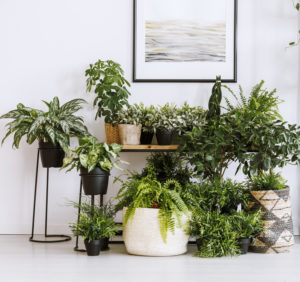Winter Care for Tropical and Non-Hardy Plants: Natorp's Expert Guide

Winter Care for Tropical and Non-Hardy Plants: Natorp’s Expert Guide
Are you wondering how to care for your tropical and non-hardy plants during winter? As temperatures drop, it’s essential to prepare your plants to come indoors to thrive through the cold months. Here’s a step-by-step guide to help Cincinnati gardeners bring tropical plants safely indoors for winter.
When to Bring Your Tropical Plants Indoors
Once outdoor temperatures consistently dip below 50°F, it’s time to move your non-hardy plants indoors. Keep an eye on the forecast for an early frost, as a sudden chill can damage your plants before you get them inside.
Steps for Bringing Tropical Plants Indoors for Winter
1. Acclimate Your Plants to Indoor Conditions
Before bringing plants indoors, place them in a shady outdoor spot for 10 days to two weeks. This transition period helps them adjust to the lower light levels they’ll experience indoors. During this time, monitor the weather to protect plants from unexpected cold snaps or frost.
2. Prepare Plants for a Pest-Free Indoor Move
Before bringing your tropical plants inside, follow these three essential steps to avoid bringing pests indoors:
- Rinse with Water: Hose plants off with a strong stream of water to remove surface insects.
- Apply Insecticidal Soap: Thoroughly spray plants with insecticidal soap, covering the tops and bottoms of leaves, stems, and trunks. Allow the spray to dry before moving plants indoors.
- Inspect the Root Ball: Lay the plant on its side, slide it out of the pot, and check the root ball for any pests or hidden debris. To be thorough, soak the entire pot in a tub of water for several hours to drown any pests in the soil.
3. Set Up an Ideal Indoor Environment for Tropical Plants
Place your tropical plants in a bright, well-lit area indoors, away from heat vents and cold drafts. Add a saucer under the pot and water with lukewarm water as needed, ensuring the plant is well-drained and that no excess water sits in the saucer.
4. Expect and Manage Leaf Drop
As plants adjust to indoor lighting, expect some leaf drop—this is a natural part of the transition. Keep an eye out for any insect flare-ups, and have insecticidal soap, systemic insecticides, and whitefly traps ready if needed.
5. Reduce Feeding
During winter, reduce feeding to occasional doses of water-soluble fertilizer. Resume regular feeding once the days lengthen in spring to encourage new growth.
6. Shower Your Plants for Healthier Foliage
Throughout the winter, give your plants an occasional rinse in the shower. A 5-10 minute shower with lukewarm water cleans the leaves, washes off pests, and provides humidity. This routine helps keep plants refreshed until they can return outdoors in the spring.
Keep Your Tropicals Thriving with Natorp’s Help
Moving tropical plants indoors can be easy with a little planning. For more plant care tips, visit our Plant Care Library, or reach out to our experts for personalized advice.